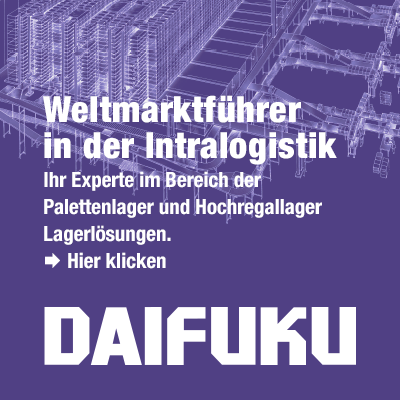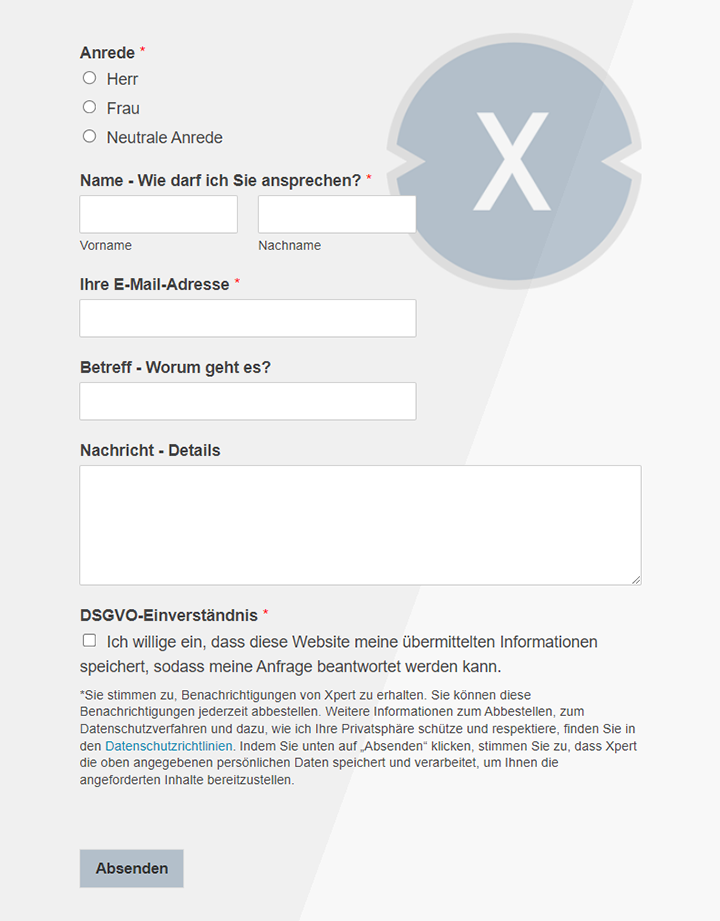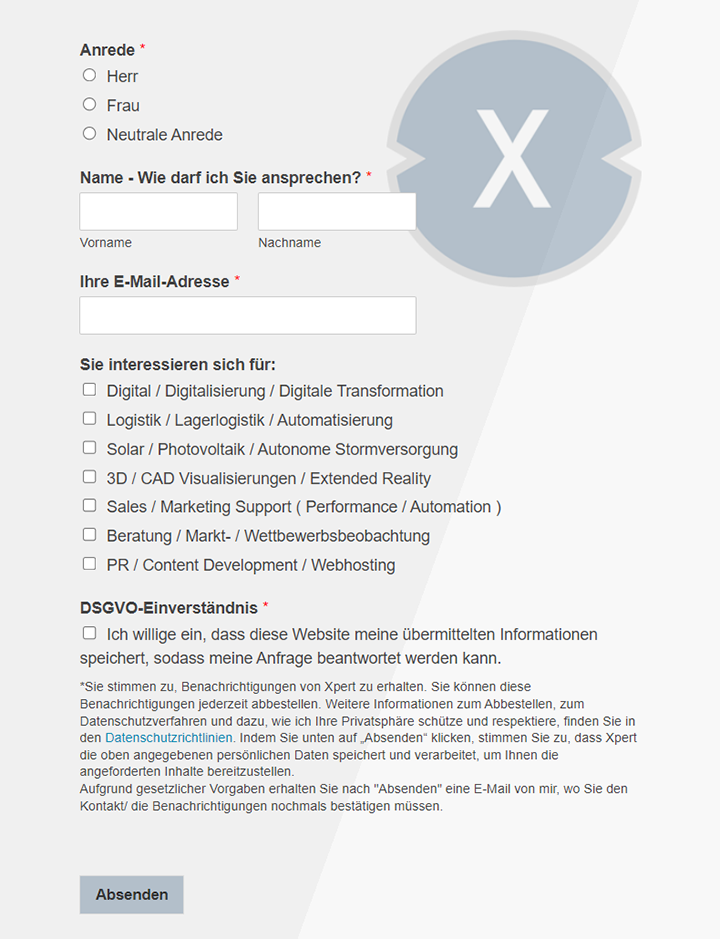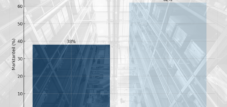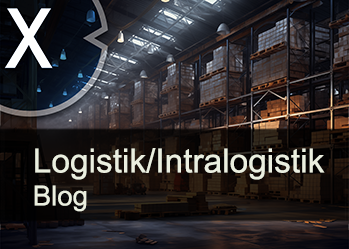Almost half imported: These figures show how vulnerable the British food supply really is
Xpert pre-release
Language selection 📢
Published on: October 6, 2025 / Updated on: October 6, 2025 – Author: Konrad Wolfenstein

Almost half imported: These figures show how vulnerable the British food supply really is – Image: Xpert.Digital
Imports as a lifeline? The central role of cold chain logistics for the British food supply
Why does the United Kingdom rely on imports?
The United Kingdom has become a heavily import-dependent country in recent decades. The figures speak volumes: The country imports approximately 48 percent of all the food it consumes. This dependence did not arise by chance, but is the result of various structural factors that have made the country one of the most import-dependent in Europe.
Britain's self-sufficiency rate has steadily declined. While it was over 75 percent in the 1980s, the country now produces only about 60 percent of the food it consumes. The situation is particularly dire for fresh fruit, where the self-sufficiency rate is a mere 17 percent. For vegetables, the figure is 55 percent, with the country having to import 85 percent of all fresh fruit and 50 percent of vegetables.
This development is not only the result of natural conditions, but also of conscious economic decisions. The British climate is unsuitable for the cultivation of many products such as rice, bananas, tea, or cocoa, for which the country is entirely dependent on imports. However, even for products that could, in principle, be grown domestically, market conditions have evolved in such a way that imports are often more economical.
How has import dependence developed?
The trend toward increased import dependence has further accelerated in recent years. Experts are already warning of a decline in the self-sufficiency rate to a dangerous 50 percent. This development is being driven by various factors that go far beyond climatic constraints.
Paradoxically, Brexit has not reduced import dependence but rather created new challenges. Although leaving the EU was presented as an opportunity to strengthen domestic agriculture, EU countries remained the most important suppliers. In 2023, 24.2 percent of all British food imports came from the EU, with the Netherlands, Ireland, Germany, and France being the most important suppliers.
While the diversification of import sources has increased, this does not compensate for the decline in domestic production. The top ten exporting countries supply 69 percent of all British food imports, demonstrating a degree of diversification but also highlighting the dependence on external factors.
Which structural problems increase import dependence?
The increasing dependence on imports is not just the result of natural market development, but is exacerbated by structural problems in British agriculture. Many farms have ceased production or switched to other uses because they can no longer operate profitably with the low prices offered by supermarkets.
Energy costs have become a critical factor. Many greenhouses producing cucumbers, tomatoes, and lettuce have halted the current cultivation cycle because production has become unprofitable. This increases dependence on imports from intensively farmed markets such as Spain and the Netherlands.
Another structural problem is the concentration of production. Approximately 20 percent of the largest producers account for 80 percent of total production. If these companies shift their operations to more profitable businesses such as development projects or energy generation, this has a disproportionate impact on national self-sufficiency.
How do global crises affect supplies?
The COVID-19 pandemic has dramatically highlighted the fragility of import-dependent food supplies. Empty supermarket shelves during lockdowns gave the population a taste of what can happen during supply shortages. This experience has reignited the debate about food security.
Climate change and extreme weather events pose a growing threat. Three of the UK's largest suppliers of fresh fruit—Brazil, South Africa, and Colombia—are classified as countries with medium to low climate resilience. Their agricultural capacity is considered particularly vulnerable to climate-related disruptions.
The conflict in Ukraine has demonstrated how quickly global events can impact food supplies. Disruption to grain and oilseed markets led to significant price increases, including in the UK. Although the country has demonstrated a certain resilience through its purchasing power and ability to switch between different trading partners, risks remain.
What does this mean for supermarket shelves?
The dependence on imports is directly noticeable on supermarket shelves. While some media reports speak of dramatic shortages, more recent analyses paint a more nuanced picture. Most basic foodstuffs are available, but prices and availability fluctuate significantly more than before.
Seasonal fluctuations have become particularly pronounced. In January, the United Kingdom imports 90 percent of its lettuce and 85 percent of its tomatoes from the EU, while in summer it produces a large portion itself. This extreme seasonality makes supplies vulnerable to disruptions in the countries of origin.
Specialized and high-quality food products are particularly affected. Brexit has increased the costs and bureaucratic burden for imports, causing many smaller EU suppliers to leave the British market. This is particularly evident in delicatessen products and specialized food products.
What unique challenges does the cold chain present?
The cold chain presents unique challenges that go beyond normal logistics. Over 50 percent of all food consumed in the UK must be refrigerated or frozen, making the cold chain a critical infrastructure. This infrastructure includes approximately 450 temperature-controlled warehouses and 100,000 temperature-controlled vehicles.
The complexity of temperature requirements is enormous. Different products require different temperature ranges: Frozen products must be stored at a minimum of -18°C, fresh fish and meat at 2°C, dairy products and sausages at 0-6°C, and fruit and vegetables in three different temperature ranges depending on product-specific requirements.
How critical are temperature fluctuations?
Temperature fluctuations can have catastrophic consequences. Studies show that up to 30 percent of refrigerated vehicles experience temperature fluctuations outside the recommended range during transport. A deviation of just 3°C can enable the growth of dangerous bacteria such as Clostridium botulinum.
The effects of temperature fluctuations are far-reaching. In frozen foods, ice crystals can form, damaging the cell structure and impairing taste and nutritional value. In fresh products, temperature fluctuations lead to accelerated spoilage and drastically shorten shelf life.
Studies have shown that companies that implement real-time temperature monitoring can achieve a 30 percent reduction in spoilage rates and a 20 percent increase in efficiency. These figures demonstrate the enormous potential of precise temperature control.
What role does speed play in the cold chain?
Time is a critical factor in the cold chain. The longer food has to be transported and stored, the greater the risk of quality loss and spoilage. Average delivery times have increased by 30 percent due to Brexit, placing additional strain on the cold chain.
The "first in, first out" principle becomes even more important in the cold chain. Products must be handled quickly to avoid spoilage. Modern warehouses can transport up to 60 pallets per hour at a constant speed while maintaining temperature control from the production area to the delivery zone.
Automated systems can significantly increase speed. STVs, for example, can operate more than five times faster than conventional pallet conveyor systems and handle the capacity of an entire conveyor loop on their own. This speed is crucial to maintaining the integrity of the cold chain.
How complex is the coordination of different temperature ranges?
Coordinating different temperature zones represents one of the most complex logistical challenges. Modern cold storage facilities must manage several separate temperature zones, ranging from -25°C for frozen products to +15°C for climate-controlled areas. Each zone requires specialized equipment and separate monitoring systems.
Multi-temperature trailers make it possible to transport different product categories in one vehicle, but the complexity of monitoring and control increases exponentially. Any temperature fluctuation in one area can affect other areas, making precise automation essential.
The challenge becomes even more complex when products need to move between different temperature ranges. Tempering—the thawing of frozen products to chilled temperatures—must be carefully controlled to ensure quality and safety.
What impact do expiration dates have on logistics?
Expiration dates add an additional dimension of complexity to cold chain logistics. Unlike perishable goods, food cannot be stored indefinitely, and its remaining shelf life directly impacts its value and saleability. This requires sophisticated warehouse management systems that not only coordinate the physical movement of goods but also track their shelf life.
The challenge is compounded by the varying shelf lives of different products. While frozen goods can last for months, fresh products often only last a few days or even hours. These differences require sophisticated algorithms for inventory management and product turnover.
FIFO (First In, First Out) systems are becoming even more critical in food logistics than in other industries. Automated systems must be able to not only manage the most recent deliveries but also ensure that older stock is used first. This requires precise tracking and intelligent route planning within warehouse facilities.
How are automated storage systems revolutionizing the cold chain?
Automated storage and retrieval systems (AS/RS) have established themselves as a key technology for modern cold chain logistics. These systems offer the precision and speed required to meet the complex demands of food logistics. They can achieve accuracy levels of up to 99.9 percent, which is critical in an environment where errors can lead to spoilage and food waste.
The integration of AS/RS systems into cold storage facilities enables unprecedented optimization of storage space. By using high-bay warehouses, companies can maximize their storage capacity while reducing energy costs per cubic meter. Modern systems can manage tens of thousands of pallet spaces, as demonstrated by the example of a Dutch logistics center with 32,000 pallet spaces across seven floors.
A particularly innovative approach is shuttle technology, which involves installing lightweight vehicles on each level. These systems consume 60 percent less energy per cycle than conventional crane systems, while offering higher speeds and improved serviceability. The vehicles can be replaced individually in the event of a malfunction without shutting down the entire system.
Xpert partner in warehouse planning and construction
Future-proof food supply thanks to automated cold chain technology
What advantages do sorting transfer vehicles offer?
Sorting Transfer Vehicles (STVs) represent a revolutionary addition to traditional AS/RS systems. These rail-guided vehicles can handle up to 800 transfers per hour, offering a significant performance improvement over conventional conveyor systems. Their speed is particularly valuable in cold chain logistics, where time is directly correlated with product quality.
The flexibility of STVs is another key advantage. They can operate in straight lines or in closed loops, and multiple vehicles can work in coordination on the same route without colliding. This coordination is made possible by central control systems that track the precise position of each vehicle and assign tasks accordingly.
STV freezer models are specifically designed for cold chain environments. These systems can withstand the extreme temperatures and unique requirements of cold storage facilities while maintaining high performance. They enable automation to be brought into even the coldest areas of the cold chain, where human labor is limited.
How do these technologies improve processing speed?
Combining AS/RS and STV technologies can dramatically increase processing speed. Simulations show that STV systems can move nearly twice as many pallets as conveyor loops in the same amount of time. This speed increase is especially important for time-critical deliveries, where rapid delivery of refrigerated pallets to picking or shipping stations is required.
This high speed is made possible by intelligent control systems that optimize every inch of the warehouse facility. Modern shuttle systems can transport up to 60 pallets per hour at a constant speed while maintaining seamless temperature control from the production area to the delivery zone.
These speed improvements have a direct impact on product quality. Shorter dwell times in storage facilities mean longer shelf life for consumers and reduced losses due to spoilage. In an industry where even a one-hour delay for certain products can be critical, these efficiency gains can mean the difference between success and failure.
What role does precision play in automation?
Precision is not only desirable in automated cold chain logistics, it is absolutely essential. The 99.9 percent accuracy achieved by modern AS/RS systems means that only one in 1,000 transactions is incorrect. In an environment where incorrect placement can lead to spoilage, contamination, or safety issues, this precision is invaluable.
This precision extends to all aspects of operations. Modern systems can track not only the physical location of each pallet, but also its temperature history, arrival time, and expiration date. This information is updated in real time, enabling warehouse managers to make informed decisions about goods flow and priority.
The precision of automated systems also reduces the need for human intervention in extreme temperature ranges. Humans can only work in freezer warehouses at -25°C or below for short periods of time. Automated systems can handle these environments continuously without compromising their performance, maintaining higher levels of accuracy than human workers could achieve under such conditions.
How do these systems contribute to energy efficiency?
Energy efficiency is a critical factor in cold chain logistics, as refrigeration is one of the most energy-intensive processes in the food industry. Modern automated systems can contribute significantly to energy efficiency. Shuttle systems, for example, consume 60 percent less energy per cycle than conventional crane systems, resulting in significant savings given the large number of daily cycles.
Energy efficiency is achieved through several factors. First, automated systems enable better space utilization, requiring less cooling space per stored unit. A well-maintained 100,000 m³ cold storage room should have a specific energy consumption (SEC) of 10 kWh/m³/year, whereas for a 500,000 m³ warehouse, the SEC can be less than 5 kWh/m³/year.
Automated systems also reduce the frequency and duration of door openings, one of the main sources of energy loss in cold storage facilities. Through precise planning and coordinated movements, these systems can minimize the time refrigerated areas are exposed to outside air. This can result in energy savings of up to 20-30 percent.
Why is investing in resilient supply chains strategically necessary?
The strategic imperative to invest in resilient, import-based supply chains is highlighted by the increasing frequency and intensity of disruptions. Brexit, COVID-19, the conflict in Ukraine, and extreme weather events have all demonstrated the vulnerability of existing systems. A resilient supply chain is not only insurance against future disruptions but also a competitive advantage in an increasingly volatile environment.
The costs of supply chain disruptions are enormous. Food waste due to inadequate refrigeration costs the global food industry an estimated $750 billion annually. A 2024 study by the University of Michigan suggests that poor cold chain management could be responsible for approximately 620 million tons of annual global food losses.
Investing in modern, automated cold chain systems can significantly reduce these losses. Companies that have invested in advanced temperature control and automation report 30 percent less spoilage and 20 percent higher efficiency. These improvements often pay for themselves within three to five years.
How can investments strengthen national food security?
Investments in cold chain infrastructure have a direct impact on national food security. The Cold Chain Federation has rightly pointed out that the cold chain should be recognized as critical national infrastructure. This recognition would allow for prioritizing strategic investments and strengthening the system's resilience.
The economic impact of a robust cold chain is significant. The UK cold chain contributes £14 billion to GDP and supports 184,000 jobs. These figures underscore the economic importance of well-functioning cold chain logistics, which extends far beyond the food industry.
Diversifying supply chains through modern technology can also reduce dependence on single suppliers or regions. Automated systems make it possible to quickly switch between different suppliers and respond to disruptions. This flexibility is crucial for maintaining supplies in times of crisis.
What long-term benefits do these investments offer?
The long-term benefits of investing in automated cold chain technology extend far beyond immediate operational improvements. These systems lay the foundation for a more sustainable and resilient food supply capable of meeting the challenges of the 21st century.
Sustainability is becoming an increasingly important factor. Modern automated systems can reduce energy consumption by up to 60 percent while drastically reducing food waste. With 9.5 million tons of food wasted annually in the UK, which generates 25 million tons of greenhouse gas emissions, a reduction of even just 10 percent could have a significant environmental impact.
Technology also creates new opportunities for innovation and efficiency. Artificial intelligence and machine learning can be integrated into automated systems to improve forecasting, optimize maintenance, and minimize energy consumption. This continuous improvement ensures that investments will continue to generate value well into the future.
How does digitalization affect the cold chain?
Digitalization is revolutionizing the cold chain by providing unprecedented visibility and control. Internet of Things sensors can monitor every pallet, container, and truck in real time, continuously transmitting data on temperature, humidity, location, and condition to central systems. This data enables managers to proactively respond to potential problems before they lead to costly losses.
Blockchain technology is beginning to gain traction in the cold chain to improve traceability and build trust between supply chain partners. Every step in the cold chain can be cryptographically documented, creating an immutable record of each product's temperature history and handling.
Artificial intelligence can identify patterns in data that aren't obvious to humans. These insights can lead to predictive maintenance, optimized route planning, and improved inventory management. For example, algorithms can predict when a cooling system is likely to fail and initiate preventative measures.
The future of Britain's food supply
The UK's food supply is at a critical juncture. Growing import dependence, exacerbated by Brexit and global uncertainty, makes robust and efficient cold chain logistics more important than ever. At the same time, new technologies such as automated storage systems and sorting transfer vehicles offer unprecedented opportunities to address the challenges of modern food logistics.
Investing in these technologies is not just a business decision, but a strategic imperative for national food security. The ability to process imported food quickly, accurately, and energy-efficiently will determine how well the United Kingdom can withstand future challenges.
The combination of AS/RS systems and STVs provides the speed, precision, and flexibility required to meet the complex requirements of the modern cold chain. These systems can not only reduce operational costs and improve product quality, but also lay the foundation for a more sustainable and resilient future.
The time for half-hearted measures is over. The United Kingdom must invest now in the infrastructure that will secure its food supply for decades to come. The technologies are available, the knowledge exists, and the economic benefits are clearly documented. What is still missing is the political will and strategic vision to recognize these investments for what they are: an investment in the nation's future.
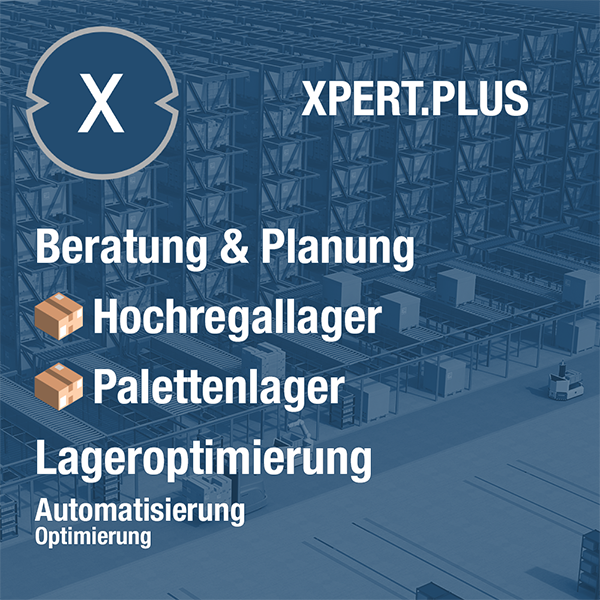
Xpert.Plus warehouse optimization - high-bay warehouses such as pallet warehouses consulting and planning
We are there for you - advice - planning - implementation - project management
☑️ SME support in strategy, consulting, planning and implementation
☑️ Creation or realignment of the digital strategy and digitalization
☑️ Expansion and optimization of international sales processes
☑️ Global & Digital B2B trading platforms
☑️ Pioneer Business Development
I would be happy to serve as your personal advisor.
You can contact me by filling out the contact form below or simply call me on +49 89 89 674 804 (Munich) .
I'm looking forward to our joint project.
Xpert.Digital - Konrad Wolfenstein
Xpert.Digital is a hub for industry with a focus on digitalization, mechanical engineering, logistics/intralogistics and photovoltaics.
With our 360° business development solution, we support well-known companies from new business to after sales.
Market intelligence, smarketing, marketing automation, content development, PR, mail campaigns, personalized social media and lead nurturing are part of our digital tools.
You can find out more at: www.xpert.digital - www.xpert.solar - www.xpert.plus



